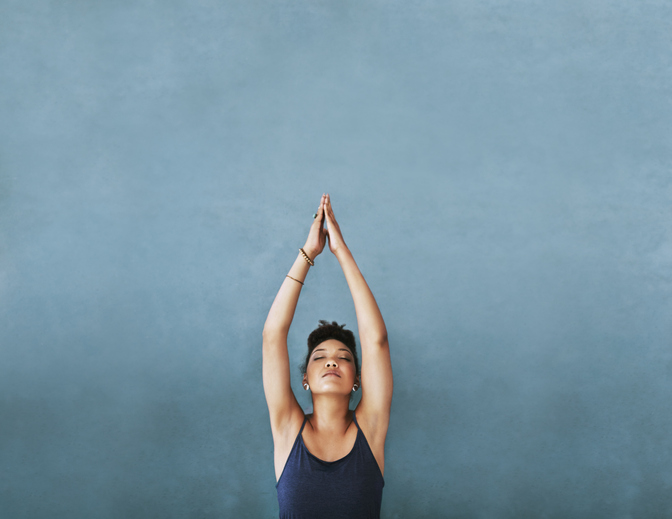Can you meditate standing up?

The answer is yes, you absolutely can! Jon Kabat-Zinn, one of the pioneers of the mindfulness movement, shows us how to incorporate meditation into our hectic modern lives. Read on to find out how to be mindful anytime and anywhere, even on your commute…
It is possible to meditate standing up. Along with sitting, lying down, and walking, standing is one of the four classical postures for meditation.
In standing meditation, it is helpful to take our cues from trees because trees really know how to stand in one place for a very long time, at least relative to our brief lives. Yet they manage to be in the timeless present the whole time, however young or old they may be. So sometimes it can be helpful to just stand next to a favourite tree for a period of time and practice standing outside of time, hearing what the tree hears, experiencing the light the tree is experiencing, feeling the air the tree is feeling, standing on the soil the tree is standing on, inhabiting the moment the tree is inhabiting, and inhabiting, and inhabiting….
As with all meditation practices, it helps to do this for longer than your first impulse to quit, to extend your standing out beyond the present limit of your patience, if just a little bit. It also helps, of course, if you are fully in your body, and perhaps imagining, if not feeling, that your feet are rooted to the ground and that your head is elevated with a sense of grace and ease toward the heavens (the Chinese character for man/person is a figure standing)— because between Heaven and Earth lies the domain in which the human unfolds.
This kind of standing is a conscious embodiment of standing in the midst of your own life, and thus, you could say, of taking a stand in your life. Your bearing, the carriage of your body, how evenly your weight is distributed on your feet, how you hold your head and how you hold your arms and your palms, even how long you are willing to remain, are all part of this huge gesture of mindfulness in the standing posture—so an awareness of these various elements can be quite useful. Of course, you stand however you can, but it is helpful to hold the intention to align yourself with the central, vertical axis of your very being, in other words, to stand with dignity. Such a bearing tends to clear and calm the mind and allows it to be more spacious and less contracted and congested.
And to this posture, you then bring or allow to unfurl a spacious awareness of the nowscape, including all the particular sensescapes and the mindscape of the present moment. Then, you give yourself over to simply being with what is unfolding, practicing as with sitting or lying down, with whatever subset of the scaffolding feels appropriate to you in this moment, including no scaffolding whatsoever, just this moment standing here, nothing more, being the knowing that awareness of standing here already is. This is choiceless awareness in the standing posture, a choiceless awareness that includes and subsumes the carriage of the body standing, breathing, hearing, seeing, touching, feeling, sensing, smelling, tasting, and knowing itself. You are not going anywhere. You are planted here, standing still, standing “firm in that which you are” in the words of the great Indian Sufi poet, Kabir.
Of course, standing meditation can be practiced anywhere, for any length of time, and not just in the vicinity of trees. You can practice waiting for elevators and while riding them, while waiting for buses and trains or for people you have arranged to meet at some appointed hour in some public place where it is not convenient to sit down. You can practice anytime, anywhere. You don’t need to be waiting for anybody or anything. You can practice just standing for its own sake, not fidgeting, not moving much, a human being standing in his or her life. Just standing. Just being. Just being alive. Mountaintops, forests, beaches, jetties, porches, or a corner in any room in your house are all good places to practice standing and bearing witness to the unfolding of the world.
As usual, if it is to be mindful standing, a certain kind of rich intentionality and attention are required, whether they are invoked deliberately or emerge effortlessly in the moment.


